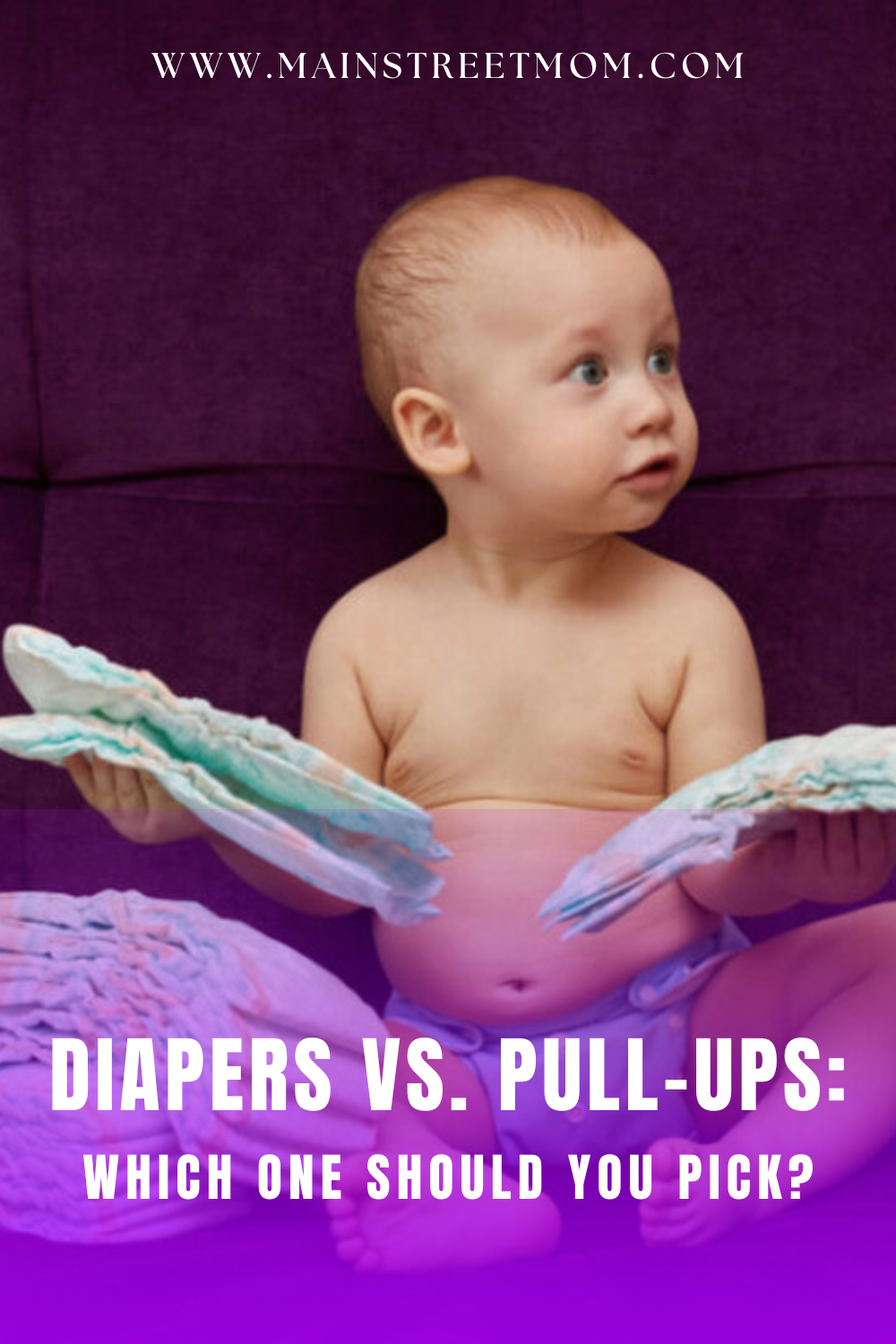Motherhood brings a lot of challenges, but it probably didn’t cross your mind that there’ll be a debate about different kinds of diapers, too! Diapers vs. pull-ups… Is there even a difference? Did you make the right choice?!
Don’t worry, mama. If this is your first baby, it’s normal that your brain is overflowing with questions. Diapering can be super tricky, so it’s a good call that you’ve decided to read more about it. Diapers or pull-ups? Or is there a third option? How will you figure it all out?! Well, I think I can help you.
You’ve probably heard parents talk about how many diapers their babies use. I’m pretty sure you were still surprised when you got to experience that firsthand. Your baby is probably growing into a cute toddler now. It’s the perfect time to change your diaper game and choose something more convenient.
No matter what kind of lifestyle you lead, there will be diapers that are the right fit for your little one, so don’t worry. There’s something for everyone and I’m not surprised that you’re completely lost when it comes to picking the right option for your child.
Today, we’ll deal with the most common debate, and that’s diapers vs. pull-ups. I’ll go through both types in detail to help you make the right call. I promise you’ll know exactly what your baby needs.
What are pull-ups?
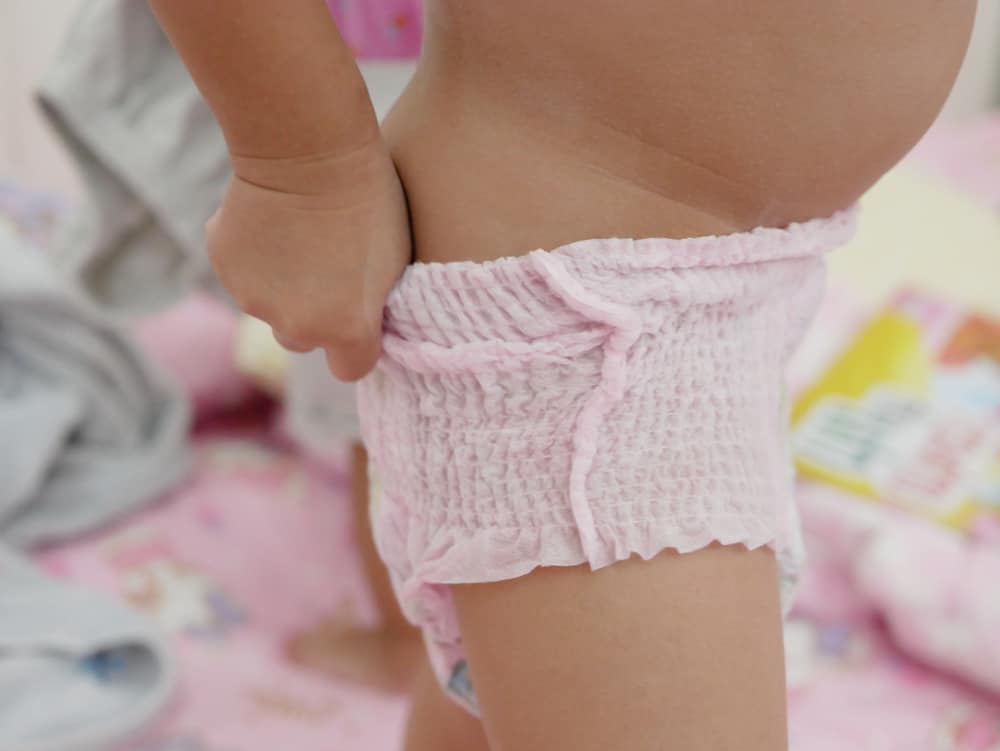
We can’t start with differences if you don’t even know what pull-ups really are. We know they’re a type of diaper, but that doesn’t tell you a lot, right? Long story short, pull-ups are diapers with elastic bands that make them easy to pull up and down like underwear (hence the name).
They’re similar to underwear because of how you put them on, but they’re made of the same material as diapers. It’s the best of both worlds!
Because of that, they’re usually used for toddlers during their potty-training stage. They’re finally able to put the diapers on (and take them off) easily, making them a lot more convenient.
This is the first step on your baby’s journey to using her potty on her own! On top of being a great choice for potty training, they’ve also become a go-to choice for nappy pants. If your toddler is super active, you’ll love pull-ups because they’ll be a lot quicker to change than regular diapers.
The main differences between diapers vs. pull-ups
Now that we know what are pull-ups, I think we’re ready to move on to why you’re here in the first place – the difference between diapers vs. pull-ups. Learning the characteristics of both is the first step in choosing the right one for your toddler.
One thing is for sure – they both do the same job. Both are made of the same material, so their style is their biggest difference, really. I’ll cover that in a moment. Still, there are some distinctions that you probably didn’t even think about. Let’s find out what they are.
1. Their design
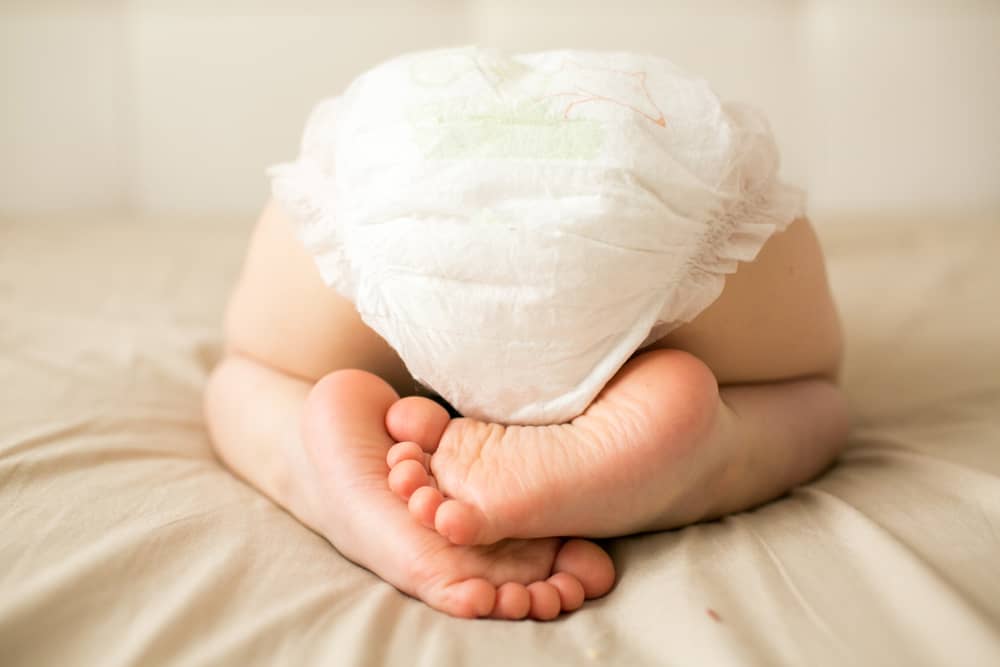
Let’s deal with the most obvious one – their design. Essentially, both diapers and pull-ups have the same cause. Their biggest difference is their style, and it’s not a small one! It’s usually a deal-breaker for parents with older babies.
If you’re already a mom, then you know how regular diapers work: they’re secured with two tabs so that your little one isn’t able to pull them down easily. Once they’re on, they stay put until you decide to change them. Because of this design, they’re an ideal choice for small babies and young toddlers.
Pull-ups, on the other hand, are designed with elastic bands, which makes them super convenient for older toddlers who are now able to use their potty on their own. They’re easy to pull up and down, which is why they’re so loved by parents who are dealing with the potty-training stage.
Moms of toddlers know how challenging it can be to change their diapers. This is a perfect solution for those of you who have to do it while your little acrobat is still standing up.
2. How much they absorb
They’re made of the same material – yes. Let’s not go all scientific on this, but let’s just say that both are made with waterproof outer layers and a fast-absorbing material inside. Still, their level of absorption isn’t exactly the same.
When it comes to the diapers vs. pull-ups battle, however, some parents claim that pull-ups are less absorbent. That makes sense considering they’re made with elastic bands for more active toddlers. Leaking becomes a lot more frequent than it was the case with diapers that are designed to stay put.
That can all depend on the brand, however, so be careful about which one you pick. Try different ones or read a few reviews online. I recommend you use the ones designed for nighttime, as they’re usually a lot more absorbent.
When hunting for the right diapers for your toddler, consider her size, how often she fills her diapers, and how active she is. Your wallet will probably feel it since I’m pretty sure you’ll have to try different ones before you find the right fit. Trust the process, have patience, and it’ll pay off in the end!
3. Their price
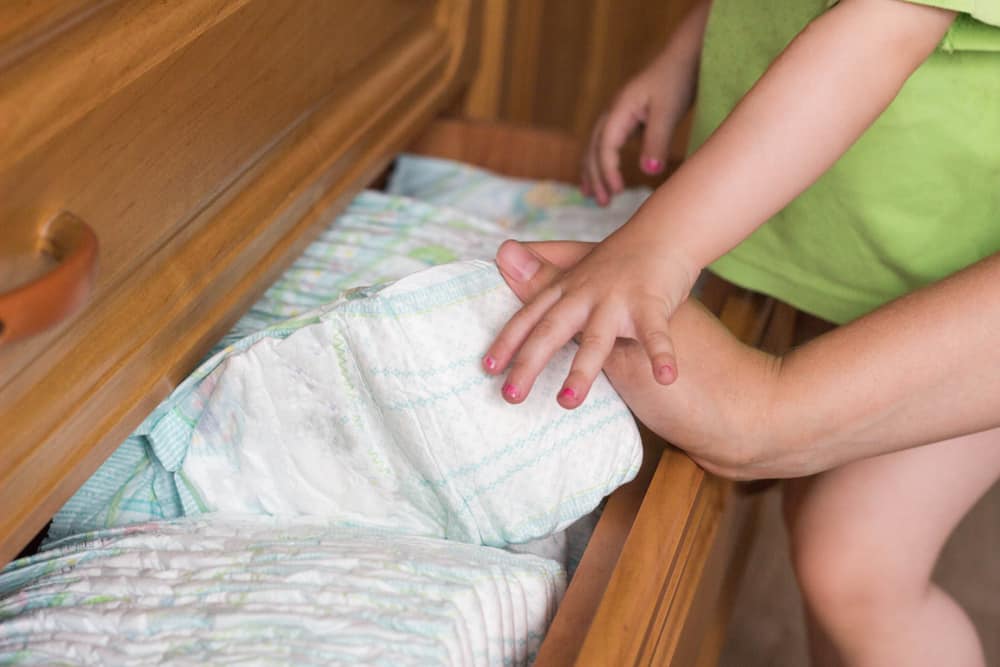
Sad news for parents with older toddlers, though – pull-ups are usually a bit pricier than regular diapers. Still, it’s not a huge difference between the two, so you might not even feel it.
It all depends on the brand you choose, of course. If you pick a more luxurious one, it’s normal that the bag will come with a pretty big price tag, too. When it comes to diapers – you typically get what you pay for. If you go for a cheaper brand, there’s a high chance you’ll do a lot more cleaning and washing.
4. Different sizes
Every mom knows – regular diapers come in sizes 1 to 6, and they’re based on how much your bub weighs. When it comes to pull-ups, they’re more like clothes. They’re designed for older toddlers rather than infants and babies, which is why their sizes are quite bigger, too.
They usually come in four sizes:
- 12m-18m (14-26 lbs.)
- 2T-3T (18-34 lbs.)
- 3T-4T (32-40 lbs.)
- 4T-5T (28-50 lbs.).
Diapers vs. pull-ups: all the pros and cons
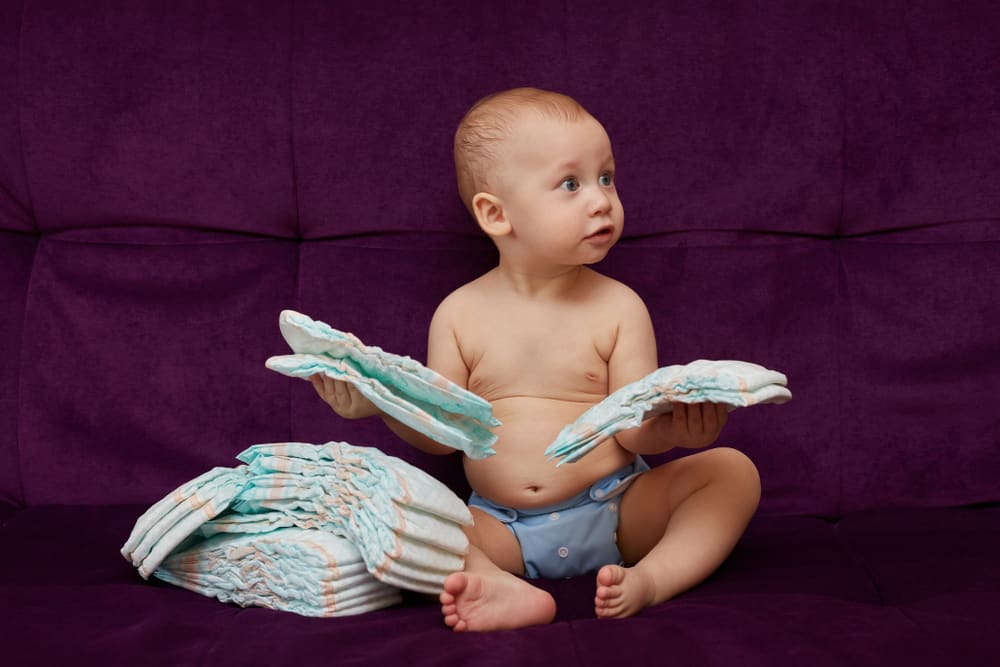
So, all in all, what are some pros and cons when it comes to these? Well, we gotta say that both diapers and pull-ups have some good and bad sides, despite being created for specific stages of your baby’s development.
Let’s start with pull-ups, first. Their biggest advantage is that they’re super comfy and a lot easier to use for toddlers and babies who like to run around the home like little athletes. They’re also a lifesaver for parents who have to deal with changing their little acrobats who just won’t stay still.
Pull-ups are quite convenient for toilet training because they are so simple to put on and take off. Their design makes them the perfect choice for that transitional period when your toddler has to learn how to use the toilet on her own.
Of course, they also have some drawbacks. Prepare to replace your pull-ups more frequently once you switch to them. They’re not as absorbent as regular diapers, which makes them prone to leaking.
Because of that, your little one might feel wet and uncomfortable. Although they’re excellent for toilet training, this may make the entire process a little more challenging.
Now, for the diapers. Their main pro is that they’re super absorbent, so you won’t have to worry about cleaning your little one’s pee as often. Diapers are also a great choice for babies, as they’re pretty secure, making them an ideal choice for nighttime.
Their main con is the fact that they’re not a good choice for babies that are learning to use their potties. They are also limited in size, which may make things difficult for toddlers who must still use them.
How old should your baby be when you switch to pull-ups?
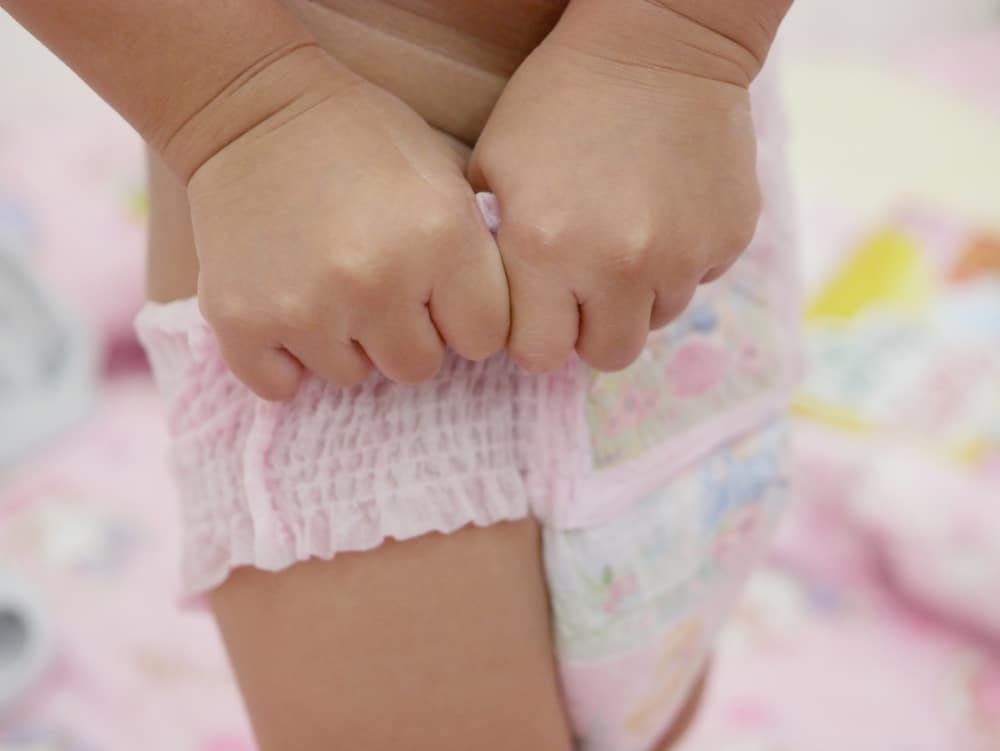
Now we know the main difference between diapers vs. pull-ups is mostly about the point in time when you should use them. So, what’s the best age to switch to pull-ups? There are some signs that might help you determine this.
Although it all depends from baby to baby, toddlers usually start using pull-ups once they turn 2 years old. It’s a good indicator, for sure, but age is not the only factor you should consider. Not every child is ready for toilet training at the same age.
In fact, your little one will start showing signs when she’s ready. Recognizing them is the key here, so let’s see what are the most common ones:
- She might want to go to the toilet with you and watch you use it.
- She’ll show more interest in the bathroom in general.
- She’ll start telling you when she needs to go.
- She’s able to take off her socks, pants, shoes, and more.
- She might ask you to use the potty herself.
- She’s old enough to be able to follow the instructions.
